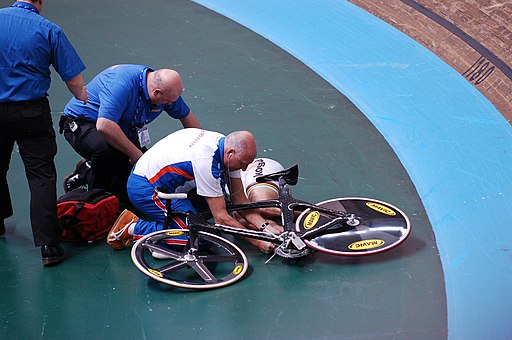Cycling! It is one of the most popular and loved exercises of the people of our country. Cycling has a lot of health benefits. According to some studies, regular cycling reduces the chance of some serious diseases, such as heart disease. It is also good for our brain and overall physical health.
Despite multiple benefits, cycling can also lead to injuries. You can prevent yourself from having those injuries by getting awareness about them. Therefore, today, I am going to tell you the most common injuries among cyclists. So, let’s begin!
Common Sports Injury In Cyclists
Knee Pain
Knee injuries are common among cyclists. They usually occur due to overuse. Knee overuse injuries include patellofemoral syndrome (cyclist’s knee), medial plica syndrome, patella and quadriceps tendinitis, and iliotibial band friction syndrome.
Iliotibial band friction syndrome causes pain on the outside of the knee. Whereas the other four injuries cause pain around the kneecap. Some of these overuse injuries can be avoided with the help of wedges inside the shoes, shoe implants, and cleat placements.
Neck/Back Pain
When cyclists ride for too long in one position, they most often develop neck pain. Exercises that release neck strain, such as shoulder shrugs and neck stretches, are an easy approach to prevent this pain. Injuries can also result from improper form. Too low handlebars may cause cyclists to round their backs, putting strain on their neck and back.
A tight hamstring and/or hip flexor can also cause cyclists to round or arch their backs, which causes the neck to hyperextend. Regular stretching of these muscles will increase flexibility and make it simpler to keep proper form. Changing the way you hold the handlebars relieves pressure from overused muscles and places it on different nerves.
Head Injuries
I hope you are already aware of the risk of head injuries when cycling. They are extremely common among cyclists. A head injury can range from a cut on the face to traumatic brain injury.
Cycling on a concrete road without a helmet can put you at a great risk of sustaining serious head injuries. In most cases, head injuries can be prevented by wearing a helmet. The usage of helmets when cycling is not required by law in India, although they are easily accessible and generally affordable.
Pain or Numbness in the Wrist/Forearm
Bent elbows will serve as shock absorbers when they encounter potholes in the road. Changing hand postures here will also help in easing any discomfort or numbness. Most common overuse injuries to the wrists, such as Cyclist’s Palsy and Carpal Tunnel Syndrome, can be avoided by alternating pressure from the inside to the outside of the palms and avoiding dropping the wrist below the handlebars. Padded gloves and extending the hands and wrists prior to riding will also be beneficial.
Foot Numbness and Tingling
Numbness and tingling of the feet are common complaints among cyclists. They usually occur due to too tight or narrow shoes. Additionally, exertional compartment syndrome may also be the cause of foot numbness. This happens when the increased pressure in the lower leg causes nerves to get compressed. Pressure measures are used to make the diagnosis, and surgical release is used to treat it.
Urogenital Problems
Pudendal neuropathy, a numbness or pain in the genital or rectal area, is a common complaint among male cyclists. This condition is typically caused by compression of the blood supply to the genital area. A wider seat, one with padding, a seat with part of it removed, or cycling shorts with padding will all alleviate pressure and prevent this condition.
When Should You Consult A Doctor?
You should consult a doctor when severe pain, bleeding, loss of sensation, or increased weakness occur as a result of an injury. Rest and painkillers can be used to relieve pain brought on by slight injuries or overuse. Alternating ice and heat therapy is another option for treating swelling and pain.


